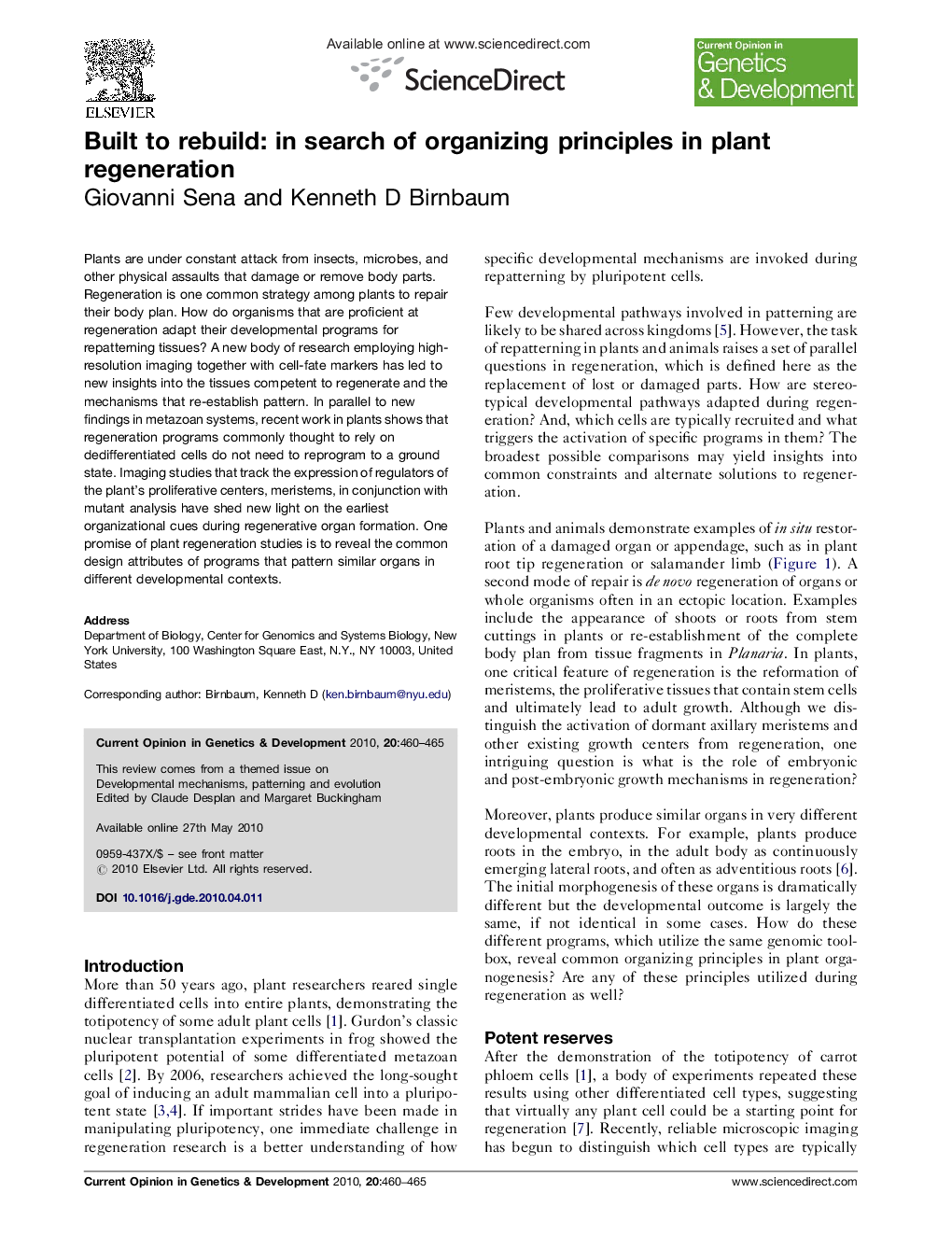| Article ID | Journal | Published Year | Pages | File Type |
|---|---|---|---|---|
| 2785049 | Current Opinion in Genetics & Development | 2010 | 6 Pages |
Plants are under constant attack from insects, microbes, and other physical assaults that damage or remove body parts. Regeneration is one common strategy among plants to repair their body plan. How do organisms that are proficient at regeneration adapt their developmental programs for repatterning tissues? A new body of research employing high-resolution imaging together with cell-fate markers has led to new insights into the tissues competent to regenerate and the mechanisms that re-establish pattern. In parallel to new findings in metazoan systems, recent work in plants shows that regeneration programs commonly thought to rely on dedifferentiated cells do not need to reprogram to a ground state. Imaging studies that track the expression of regulators of the plant's proliferative centers, meristems, in conjunction with mutant analysis have shed new light on the earliest organizational cues during regenerative organ formation. One promise of plant regeneration studies is to reveal the common design attributes of programs that pattern similar organs in different developmental contexts.
